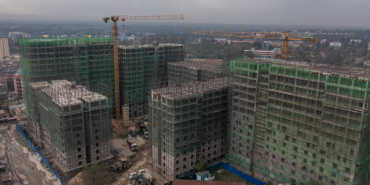Mobile Money Emerges as Preferred Payment Method for Kenya's Construction Sector

A recent report by the Kenya Institute for Public Policy Research and Analysis (Kippra) has revealed that mobile money usage is most prevalent in Kenya's construction industry.
The research shows that 66.7% of those in the construction industry use mobile money, the highest among the six sectors analyzed, which include agriculture, manufacturing, wholesale and retail, accommodation, transport, and construction. The Kenya Economic Report 2024 utilized mobile money as one of the tools to assess digital penetration in informal sector businesses. Other indicators included having an active website, using mobile phones for business, and the official use of computers. While the construction industry leads in mobile money usage, it lags in the use of active websites, with just 8.3% using computers officially and 77.8% using mobile phones for business.
The report does not explicitly explain the construction sector's preference for mobile money, but it suggests that the industry's capital-intensive and largely cash-based nature, with frequent material purchases and daily wage payments, likely contributes to this trend. The report indicates that the utilization of mobile money platforms involves digital transactions, payments, and business finance management. However, the report notes that the diffusion of technologies varies, influenced by factors such as essential infrastructure, communication channels, and social systems within the sector.
Despite the overall low level of digitization, certain sectors are leveraging technology to enhance productivity. For example, while mobile money use is high in construction at 66.7%, it is lowest in agriculture at 32.8%, and the use of mobile phones for business is notably high in construction at 77.8% compared to agriculture at 36.6%. The report also highlights the challenges faced by informal sector businesses in adopting digital tools, with high costs being a significant barrier. The informal sector often relies on simple technologies, and businesses are yet to fully embrace digitalization beyond the use of mobile phones.
Platforms like the Ajira Digital Programme have facilitated technology use in the construction industry by registering skilled workers. The Fundis application, for instance, connects businesses and homes with professionals for maintenance, repairs, and large projects, helping to transform the sector by reducing risks of poor quality and incomplete projects. Kippra concludes that the high cost of digital tools, including basic phones and mobile data plans, limits the ability of the informal economy workforce to adopt new technology.














Add new comment